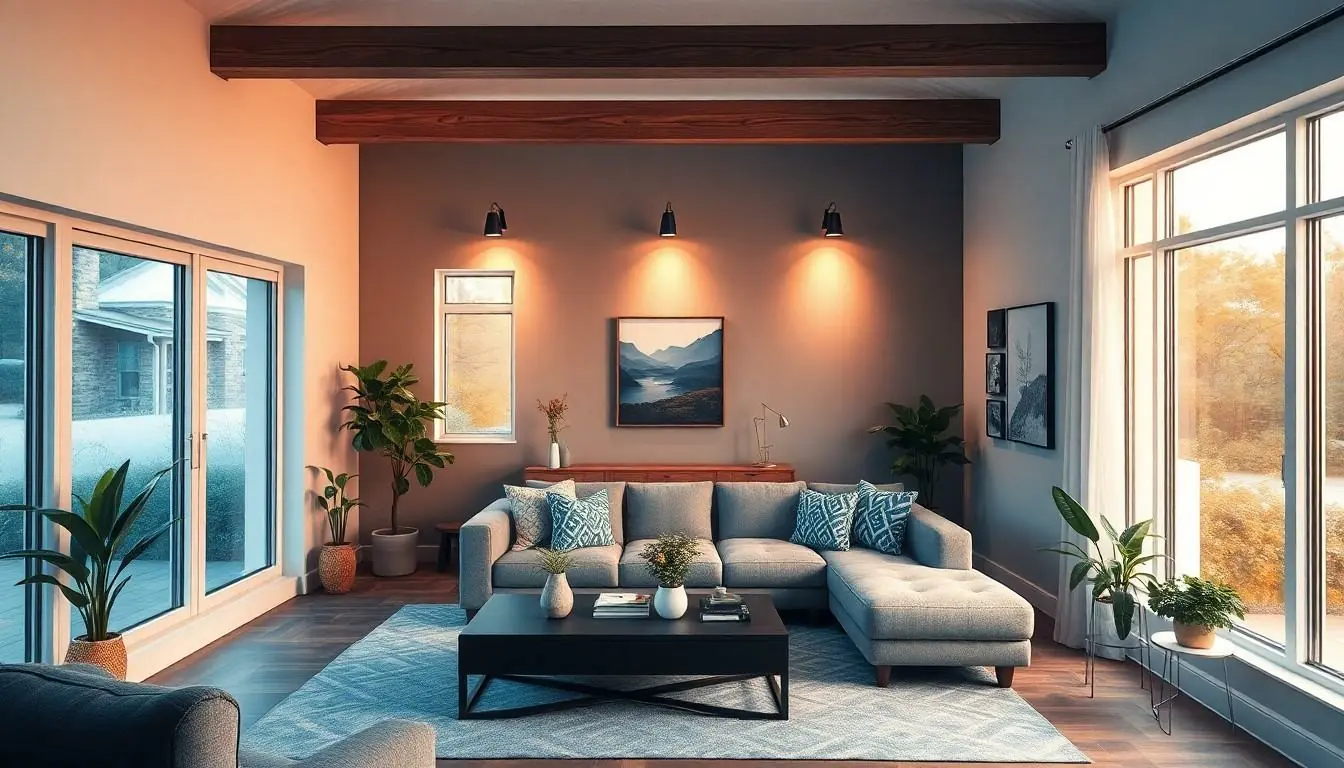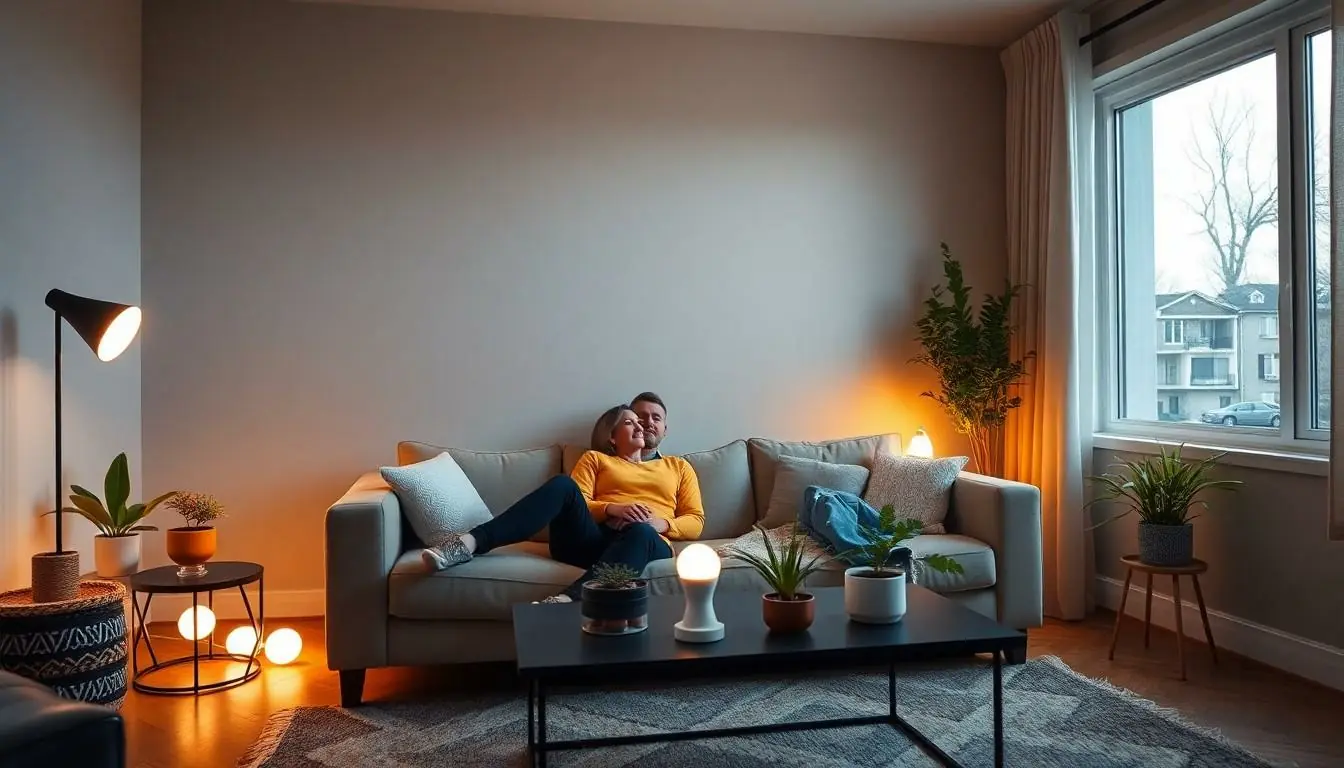Table of Contents
ToggleImagine walking into your home, and the lights automatically adjust to the perfect brightness, creating an ambiance that feels like a five-star resort. With home assistant adaptive lighting, this dream isn’t just a fantasy; it’s a reality. Gone are the days of fumbling for light switches or squinting in the dark. Instead, your home learns your preferences and adapts to your needs, making every corner feel just right.
Overview of Home Assistant Adaptive Lighting
Home assistant adaptive lighting represents a significant advancement in smart home technology. This system automatically adjusts lighting based on time, activities, and individual preferences. Users experience a seamless transition from bright, energizing light during the day to soft, calming tones at night.
Sensors play a crucial role in adaptive lighting systems. These devices detect occupancy and natural light levels, ensuring the right illumination at the appropriate times. Home assistants learn habits over time, allowing them to create personalized schedules that enhance comfort and efficiency.
Many systems integrate with other smart home devices. A homeowner can link adaptive lighting to routines that involve temperature control or entertainment systems. This interoperability creates a cohesive environment tailored to specific needs and lifestyles.
Another advantage is energy efficiency. Adaptive lighting helps reduce power consumption by dimming lights in sunny areas or turning them off in unoccupied spaces. These features not only lower energy bills but also contribute to a more sustainable home.
Customization remains a key feature of adaptive lighting systems. Users can often adjust settings through mobile apps or voice commands, ensuring easy management from anywhere in the home. This flexibility promotes user engagement and encourages broader use throughout daily routines.
Home assistant adaptive lighting improves convenience and comfort while promoting energy savings, catering to modern living demands.
Benefits of Adaptive Lighting

Adaptive lighting offers several advantages that elevate modern living. It promotes comfort and well-being while enhancing energy efficiency.
Enhanced Comfort and Well-Being
Adaptive lighting adjusts automatically to mimic natural light cycles. This functionality supports circadian rhythms, improving mood and sleep quality. Rooms become more inviting with lighting that changes based on the time of day. Increased brightness during waking hours enhances alertness, while softer tones in the evening prepare the body for rest. Home occupants appreciate how this technology creates a serene atmosphere tailored to their preferences, fostering relaxation and productivity.
Energy Efficiency
Adaptive lighting significantly reduces energy consumption. Smart systems detect occupancy and adjust illumination accordingly. By dimming or turning off lights in unoccupied areas, these systems minimize waste. When natural light is sufficient, the system automatically lowers artificial brightness, conserving power. Households experience lower energy bills as a result. Research indicates that homes utilizing adaptive lighting can save up to 30% on lighting energy costs, demonstrating its effectiveness in promoting sustainability while reducing environmental impact.
Setting Up Home Assistant Adaptive Lighting
Setting up home assistant adaptive lighting requires specific hardware and software along with a clear installation guide.
Required Hardware and Software
Essential components include smart bulbs, a home assistant hub, and compatible sensors. Smart bulbs allow for color and brightness adjustments. A home assistant hub enables communication between devices, ensuring seamless integration. Compatible sensors detect occupancy and natural light levels, automating adjustments. Supported software often includes platforms like Home Assistant or Hubitat, which provide user-friendly interfaces for configuration. Additionally, mobile applications facilitate remote control and customization, enhancing user experience.
Step-by-Step Installation Guide
First, gather all required hardware like smart bulbs and sensors. Next, connect the home assistant hub to the network, ensuring stable internet access. Then, install the smart bulbs in desired fixtures and power them on. Proceed by adding the bulbs to the home assistant hub, following on-screen prompts for pairing. After that, set up the sensors in strategic locations for maximum effectiveness. Customize settings through the app to calibrate lighting based on preferences and schedules. Finally, test the adaptive lighting functionality, ensuring it responds correctly to changes in occupancy and natural light.
Features of Home Assistant Adaptive Lighting
Home assistant adaptive lighting offers numerous features that enhance user experience and comfort. This advanced technology allows users to tailor their lighting to fit specific preferences and situations.
Customization Options
Users can modify their adaptive lighting settings through mobile apps or voice commands, ensuring personalized illumination. Simple presets like “Reading” or “Movie Night” cater to different activities, while adjustable brightness levels accommodate varying moods. Automated routines allow for gradual changes in lighting throughout the day, mimicking natural light cycles. This approach supports circadian rhythms and improves overall well-being. Additionally, users can set timers or utilize geofencing to automatically adjust lighting when entering or leaving home. The flexibility in customization elevates the adaptive lighting experience, aligning it perfectly with individual lifestyles and daily routines.
Integration with Other Smart Devices
Adaptive lighting integrates seamlessly with various smart home devices, enhancing overall functionality. Smart thermostats, for instance, can synchronize with lighting systems, adjusting both lighting and temperature for optimal comfort. Voice assistants provide an intuitive interface for managing lighting, making adjustments effortless. Home security systems also benefit, as adaptive lighting can automatically illuminate paths during nighttime alarms. Interactions between devices facilitate a cohesive environment, allowing for automation based on occupancy and time of day. Such integrations create a comprehensive smart home ecosystem that prioritizes comfort, efficiency, and user engagement.
Home assistant adaptive lighting transforms the way individuals interact with their living spaces. By seamlessly adjusting to personal preferences and natural light conditions, it promotes a healthier and more comfortable environment. This technology not only enhances daily routines but also supports energy efficiency, making it a sustainable choice for modern homes.
With its ability to integrate with other smart devices, adaptive lighting creates a cohesive ecosystem that prioritizes user engagement. As more households embrace this innovative solution, the benefits of improved mood, productivity, and reduced energy costs become increasingly evident. Embracing adaptive lighting is a step toward a smarter, more efficient, and enjoyable home experience.



